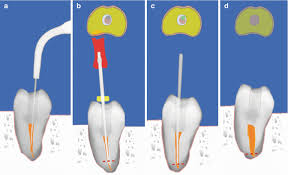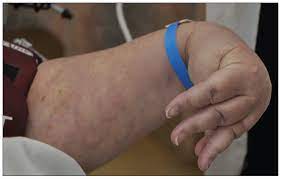Which palatal form is more retentive and offers better stability to complete denture.. U shaped
Which palatal form is more retentive and offers better stability to complete denture:
- A- V shaped
- B- Wide palate
- C- U shaped***
- D- Flat palate.
Complete or partial dentures are what is known, more colloquially, as dentures.
These dentures can be of two types, complete or partial dentures.
In the medical environment they are known as removable dentures.
In the medical environment they are known as removable dentures.
What are full or partial dentures used for?
These dentures, nowadays, are usually used as provisional prostheses until all the treatment of dental implants, dental crowns or dental bridges is completed.
Only in elderly people, full or partial dentures are used as definitive dentures as dentures, which during the day allow you to live normally despite not having teeth in your mouth and allow you to talk, eat and interact with the people.
Partial dentures:
The removable partial denture is a prosthetic device that allows for the replacement of multiple teeth.
A partial denture replaces some teeth in the jaw, but not all.
In order to make a partial denture, there must be a sufficient number of teeth for the denture to adhere to.
In addition, these teeth must have adequate bone support.
If there is no adequate support for the denture, a partial denture can lead to premature loss of the teeth in question.
Partial dentures generally feel more secure in the mouth than full dentures, but both types of dentures require getting used to wearing them.
To fabricate a partial denture, small preparations are made on the teeth to which the denture will be attached.
Impressions of the mouth are taken and then the metal framework of the partial denture is made in the laboratory.
This framework is tried in the mouth to verify the accuracy of the fit, and then returned to the laboratory for placement of the replacement teeth and final processing.
Once the complete denture is placed in the mouth, bite adjustment is often required.
These adjustments may require one or more visits by the patient, until the denture is perfectly adapted.
Alternatives to removable partial dentures include having no dentures at all, fixed partial dentures (bridges), and crowns and/or bridges with implants.
However, implants and bridges may not be appropriate for all patients.
If missing teeth are not replaced, you can lose bone, shift teeth in your upper and lower jaw, lose the ability to chew, lose support from facial muscles and structures, and have slurred speech.
Therefore, it is best to consult your dentist about all the available options.
Complete dentures:
This type of prosthesis can be considered as restorations of last resort.
Complete dentures are used to restore function to a patient who is missing all teeth in one or both jaws.
A complete denture is a prosthetic device that attempts to replicate the appearance of natural teeth while allowing the patient to chew food and speak as naturally as possible.
Many patients have difficulty adjusting to dentures, but it must be remembered that a denture is an artificial replacement for a body part, not unlike an artificial limb.
All patients with this type of prosthesis must be willing to spend time and effort adjusting to their new prosthesis.
A patient with dentures should not expect to be able to eat "as I did when I had my own teeth."
It is very important that denture patients are examined regularly, at least once a year, to assess their oral health.
Without a routine exam, it is impossible to diagnose and treat any oral condition, both common and rare, that a patient with dentures may have.
The most common problem is a chronic, persistent fungal infection under a denture.
Many times the patient is unaware of the infection due to the slow growing nature of the organism.
Much rarer, but much more serious, is the appearance of cancer in the oral cavity. Unfortunately, oral cancer has a relatively low five-year survival rate of 31-54%.
Even more worrisome is that approximately 18% of oral cancer patients will develop secondary oral cancer lesions within one year of treatment [this rate nearly doubled in patients who did not quit smoking after diagnosis].
One reason oral cancer is so deadly is that it often goes undetected at an early stage because the patient does not routinely visit their dentist.
The bone that remains in the jaws after the teeth are extracted is the base on which the denture rests.
Over time, this bone gradually disappears without the stimulation that the teeth provide.
As this bone changes, the dentures don't fit as well as they used to and subsequently begin to move around in the mouth.
This creates irritation to the gum tissue under the denture.
These irritations can cause growths of tissue as the gums try to protect themselves and in some cases these irritated areas can become cancerous.






